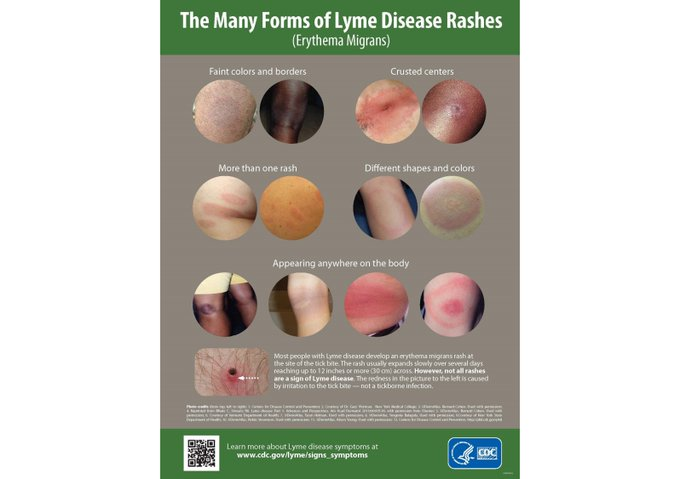In places where tickborne diseases are common, people with classic symptoms often receive prompt diagnosis and effective treatment. Unfortunately, symptoms can be missed for a variety of reasons. If under-treated or completely untreated, more persistent and difficult-to-treat symptoms can develop, becoming more serious or even fatal.
People of color often go undiagnosed/misdiagnosed at a high rate when it comes to tickborne illnesses like Lyme disease. Aside from racial bias, implicit or otherwise, in healthcare settings that can influence diagnoses and guide treatment, a lack of representation in medical literature is also impactful. In the case of Lyme disease, because there are very few pictures in biology textbooks and research materials of brown/black skin with the Lyme Erythema Migrans (EM) rash, it is often missed or identified incorrectly in Black, Hispanic, and other people of color. This rash commonly associated with Lyme disease is often called the bullseye rash because of its original presentation and identification; but it can look significantly disparate on different people. The presentation can differ even more markedly when it comes to people of color. Most people don’t talk about what a Lyme rash can look like on skin with higher melanin/pigmentation because they just don’t know. More research and training on identifying skin manifestations of Lyme disease on darker skin tones is needed to fight this tickborne illness across races and cultures.
RESOURCES
- Black Individuals More Likely to Experience Inequities in Early Diagnosis and Treatment of Lyme Disease, New Research Shows, from Johns Hopkins Medicine Newsroom
- Black patients’ Lyme disease often diagnosed late, possibly due to missed signs, from UCLA Newsroom
- Lyme Disease in Black People, from Galaxy Advanced Microbial Diagnostics
- Racial differences in reported Lyme disease incidence, by AD Fix, CA Pena, and GT Strickland
- Clinical Presentation and Pathogenesis Subcommittee Report to the Tick-Borne Disease Working Group, from The U.S. Department of Health & Human Services Office of HIV/AIDS and Infectious Disease Policy
- Racial and Ethnic Disparities in Diagnosis and Treatment: A Review of the Evidence and a Consideration of Causes, by H. Jack Geiger in UNEQUAL TREATMENT: CONFRONTING RACIAL AND ETHNIC DISPARITIES IN HEALTH CARE

